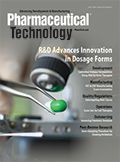Solving Pharma’s Quality Unit Identity Crisis
483s and Warning Letters Point to Inadequate Quality Oversight
Warning letters, notes, and data from regulatory inspections offer important insights into areas where pharmaceutical manufacturers can improve quality control and assurance (1–3). An analysis of FDA current good manufacturing practices (CGMPs) inspection citation data for finished drug products from 2017 through March 2020 highlights negative patterns and suggests ways to reduce risk and improve compliance. An examination of warning letters issued from 2017–2019, as well as 2020 warning letters, suggest a shift in regulatory focus during the COVID-19 pandemic. Overall, data suggest the need for senior executives to better define the goals and missions of quality departments and to improve overall staffing and support.
FDA data show that between 2017 and 2020, the average monthly number of FDA 483 observations trended downward from 241 in 2017 to 204 in 2018 and 173 in 2019. The lowest monthly numbers were observed in January 2019 (83) and December of 2019 (90), while the maximum number of observations in a single month, 360, was observed in March 2017.
Observations totaled 2889 in 2017, 2453 in 2018, and 2087 in 2019. The average number of observations received per site was 4.4 in 2019, compared with 4.7 in 2018 and 4.9 in 2017. The first quarter of 2017 saw 757 observations-the highest number recorded during this time period-while the fourth quarter of 2019 showed 409, the lowest number. Among the top 10 FDA 483 observations during 2017–2020 and the specific US Code of Federal Regulations (CFR) sections involved, it is interesting to note that the quality unit’s direct functions and responsibilities-Parts 211.22, 211.160, 211.192, 211.100, 211.165, 211.166, and 211.194-made up 73% of the top 10 observations.
Within the most cited section, CFR Title 21, Part 211.22, subsection (d), which pertains to failures in clearly delineating responsibilities of quality control, contributed the most (71%). CGMPs require that manufacturers have clear quality unit responsibilities and procedures in writing. The second most-cited section was CFR Title 21, 211.160, which discusses general requirements for laboratory control.
Of facilities were cited by FDA in 2019 for 21 CFR Part 211.22 deficiencies, 64% also received a higher number (>5) of 483 observations, highlighting that weakness in a quality unit’s responsibility and its scientific capability can be a business risk.
A review of warning letters issued by FDA’s Center for Drug Evaluation and Research (CDER) from 2017–2019 showed the number of cGMP compliance-related warning letters for finished drug product sites went down in 2019. In the second quarter of 2020, CDER was posting many warning letters, primarily to websites, for “unapproved and misbranded products related to coronavirus disease 2019 (COVID-19).” The number of warning letters for 2020 numbers may not reflect a typical year’s course. However, inspection data may be seen as a reminder that strong quality departments are crucial to reducing compliance risks.
References
1. FDA, “Warning Letters and Notice of Violation Letters to Pharmaceutical Companies,” www.fda.gov.
2. FDA, “Inspection Observations,” www.fda.gov.
3. FDA, “Inspection Citation Dataset,” www.fda.gov.
Article Details
Pharmaceutical Technology
Vol. 44, No. 7
July 2020
Page 48
Citation
When referring to this article, please cite A. Pazhayattil, "Solving Pharma’s Quality Unit Identity Crisis," PharmTech, 44 (7) 2020.
